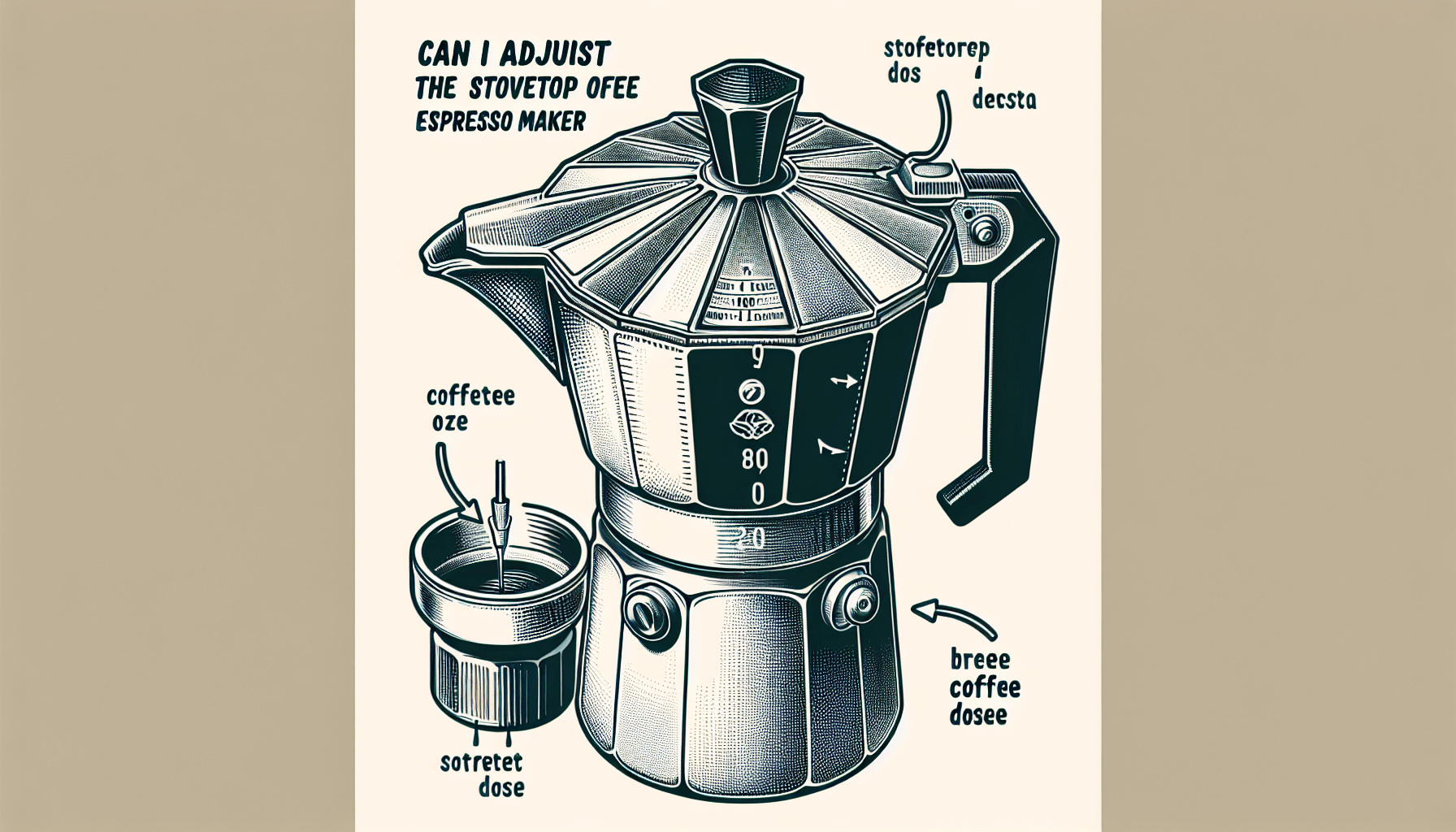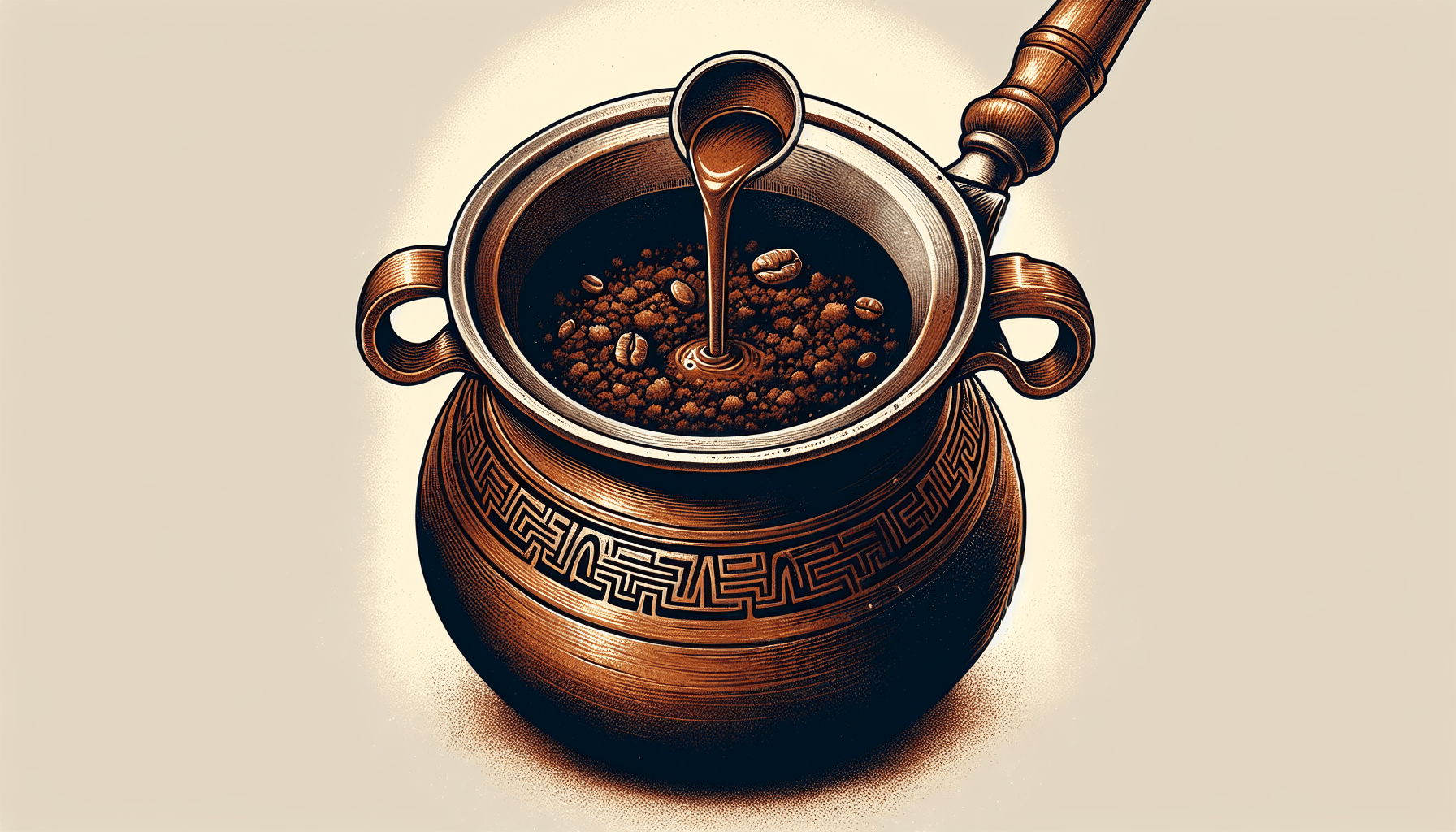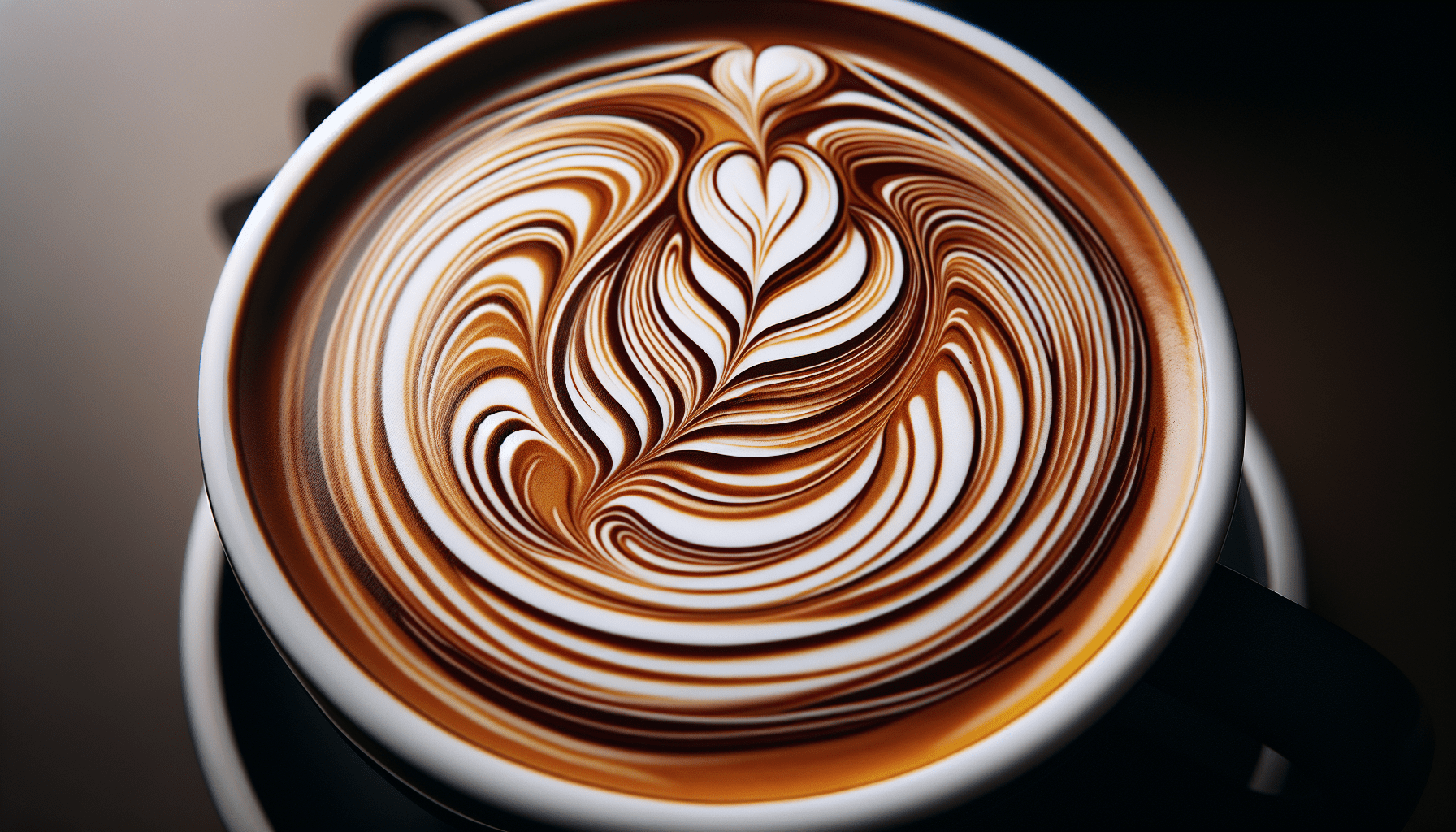If you’re a coffee lover who enjoys the convenience and simplicity of a stovetop espresso maker, you might be wondering if it’s possible to adjust the coffee dose to suit your personal preference. The good news is that with certain stovetop espresso makers, you have the flexibility to customize the amount of coffee grounds used, allowing you to achieve your desired strength and flavor. In this article, we’ll explore the possibilities of adjusting the coffee dose with a stovetop espresso maker, empowering you to create the perfect cup of joe every time.
Understanding Stovetop Espresso Makers
Stovetop espresso makers, also known as moka pots, are a popular and affordable option for coffee lovers who want to enjoy espresso-like coffee without the need for expensive espresso machines. These small, compact devices are designed to be used on stovetops, utilizing steam pressure to brew coffee that is both rich and flavorful. If you’re a coffee enthusiast looking to explore the world of stovetop espresso makers, let’s delve into the inner workings of these unique coffee brewing devices.
What is a stovetop espresso maker?
A stovetop espresso maker is a cylindrical pot made of aluminum or stainless steel, consisting of three main components: a bottom chamber for water, a middle chamber for ground coffee, and a top chamber for the brewed coffee. This traditional coffee-making device operates based on the principle of steam pressure. As heat is applied to the bottom chamber, water heats up and turns into steam. The steam then builds pressure, forcing water through the coffee grounds in the middle chamber and pushing it upwards into the top chamber, resulting in a concentrated and aromatic brew.
How does it work?
To make coffee with a stovetop espresso maker, you start by filling the bottom chamber with water up to the designated mark. Next, you insert the middle chamber, which contains the coffee grounds. It’s essential to use finely ground coffee suitable for espresso brewing. Once the coffee grounds are in place, you screw on the top chamber tightly. Then, you place the stovetop espresso maker on a heat source, and as the water in the bottom chamber heats up, steam pressure begins to build. This pressure forces hot water through the coffee grounds, resulting in a brewed espresso-like coffee that collects in the top chamber. Once the brewing process is complete, you can pour the coffee into your cup and savor the rich flavors.
Benefits of using a stovetop espresso maker
Stovetop espresso makers offer several advantages that make them an attractive choice for coffee enthusiasts. Firstly, they are cost-effective compared to other coffee brewing methods, such as espresso machines. Stovetop espresso makers are an affordable option that still allows you to enjoy a strong and flavorful coffee experience. Secondly, they are compact and easy to use, making them a convenient choice for those with limited kitchen space or for coffee lovers who enjoy brewing their coffee while traveling. Additionally, stovetop espresso makers provide a level of control in adjusting the coffee dose, allowing you to experiment with different flavors and strengths to find the perfect cup of coffee that suits your preferences. So, let’s dive deeper into the topic of adjusting coffee dose and how it impacts the brewing process.
Factors Affecting Coffee Dose
Importance of coffee dose
The coffee dose, referring to the amount of coffee grounds used in the stovetop espresso maker, plays a crucial role in determining the strength and flavor profile of the brewed coffee. The dose affects the extraction rate and the intensity of the coffee. By adjusting the coffee dose, you have control over the taste and characteristics of your espresso-like coffee. It allows you to fine-tune the brewing process to your liking, be it a strong and bold cup or a milder, more balanced one.
How to adjust coffee dose in a stovetop espresso maker
Adjusting the coffee dose in a stovetop espresso maker is a fairly simple process. You can start by experimenting with different weight measurements of coffee grounds to find your preferred dose. The general rule of thumb is to maintain a ratio of around 1:15, meaning 1 part coffee to 15 parts water. However, keep in mind that personal preferences may vary, and you should adjust the coffee dose accordingly to suit your taste. Gradually increase or decrease the amount of coffee grounds until you find the perfect balance that produces a rich and enjoyable cup of coffee.
Methods for adjusting coffee dose
There are a few different methods you can use to adjust the coffee dose in a stovetop espresso maker. One method is to simply change the amount of coffee grounds you add to the middle chamber. By decreasing the coffee dose, you can achieve a milder and less intense brew, while increasing the dose will result in a stronger and bolder cup of coffee. Another method is to experiment with different grind sizes. Finer grind sizes will increase the extraction rate and intensify the flavor, while coarser grind sizes will result in a milder brew. It’s important to note that adjusting the coffee dose may also require other adjustments, such as brewing time and water temperature, to achieve the desired results.
Experimenting with Coffee Doses
Why experiment with different coffee doses?
Experimenting with different coffee doses allows you to explore the full spectrum of flavors and strengths that your stovetop espresso maker can produce. By varying the coffee dose, you can uncover new taste profiles and tailor the brewing process to your personal preferences. It’s an exciting journey that allows you to discover the nuances and intricacies of the coffee you brew, helping you unlock the perfect cup.
Finding the perfect coffee-to-water ratio
When experimenting with different coffee doses, it’s essential to pay attention to the coffee-to-water ratio. This ratio determines the strength of the coffee and affects the overall taste. As mentioned earlier, a general guideline is to aim for a 1:15 ratio, but feel free to adjust it according to your taste preferences. You can begin by using a higher dose of coffee grounds and gradually decrease the amount until you find your ideal ratio. Take note of the flavors and strength you experience along the way, as this will help you refine your brewing technique.
Tips for experimenting with coffee doses
To make the most of your coffee dose experiments, here are a few tips to keep in mind:
- Start with small adjustments: Instead of drastically changing the coffee dose, make gradual adjustments to better understand the impact on the flavor profile.
- Keep a journal: Record the different coffee doses you try, along with your observations on taste, strength, and brewing time. This will help you track your progress and easily replicate successful brews.
- Use fresh and high-quality coffee beans: The quality of your coffee beans greatly affects the taste and outcome of your coffee. Experiment with different bean varieties to discover unique flavors.
- Stay consistent with other variables: When experimenting with coffee doses, try to keep other brewing variables, such as water temperature and brewing time, consistent. This way, you can better isolate the impact of the coffee dose on the final cup.
Effects of Adjusting Coffee Dose
Impact on taste and strength of espresso
Adjusting the coffee dose directly impacts the taste and strength of the espresso-like coffee brewed in a stovetop espresso maker. Increasing the coffee dose will generally result in a stronger and more intense flavor profile. The increased amount of coffee grounds allows for greater extraction of the flavors, resulting in a bolder, more robust cup. Conversely, decreasing the coffee dose will create a milder and more balanced brew. This adjustment can be beneficial for those who prefer a smoother and less intense coffee experience.
Influencing factors in adjusting coffee dose
When adjusting the coffee dose in a stovetop espresso maker, it’s essential to consider other influencing factors that can affect the final cup of coffee. For example, the brewing time, water temperature, and grind size can all interact with the coffee dose to produce different flavors and strengths. It may take some trial and error to find the ideal combination of variables that suits your taste preferences. Remember to be patient and enjoy the process of experimenting with different coffee doses to achieve the perfect cup.
Understanding Tamping and Dose Distribution
Importance of tamping
Tamping refers to the process of applying pressure to the coffee grounds in the middle chamber of a stovetop espresso maker. While tamping is not as crucial in a stovetop espresso maker as it is in traditional espresso machines, it can still impact the brewing process. Tamping ensures that the coffee grounds are evenly distributed and compacted, allowing for consistent extraction. By tamping, you create a more even surface for the water to pass through, promoting a more uniform extraction of flavors and preventing channeling.
How to achieve an even coffee dose distribution
Achieving an even distribution of coffee grounds is essential for optimal extraction and a uniform flavor profile. To ensure a consistent coffee dose distribution, start by evenly distributing the coffee grounds in the middle chamber. Use a spoon or your finger to level the coffee grounds and remove any excess, ensuring the surface is smooth and even. This will help water flow evenly through the coffee bed, resulting in a more balanced extraction.
Effects of uneven dose distribution
Uneven dose distribution can have a significant impact on the brewing process and the taste of your coffee. When the coffee grounds are not evenly distributed, water may flow through channels, bypassing certain areas of the coffee bed. This can lead to an uneven extraction, with some parts of the coffee being over-extracted while others are under-extracted. The result is a cup of coffee that lacks balance and may have off-putting flavors. By achieving an even coffee dose distribution, you ensure that water flows through the entire coffee bed, promoting optimal extraction and producing a more flavorful cup.
Tips for Consistently Adjusting Coffee Dose
Maintaining consistency in coffee dose adjustments
Consistency is key when adjusting the coffee dose in a stovetop espresso maker. To maintain consistency, use a scale to measure the exact weight of your coffee grounds. By consistently measuring the coffee dose, you can accurately replicate successful brews and make informed adjustments based on your preferences. Remember to record your measurements and observations in a journal, as this will help you maintain consistency and track your progress.
Recording your adjustments
Keeping a record of your coffee dose adjustments is vital for refining your brewing technique and finding your own signature espresso. Take note of the coffee dose, grind size, water temperature, brewing time, and any other relevant variables that you are adjusting. Additionally, record your observations on taste, strength, and overall satisfaction with each brew. This record will serve as a valuable reference point, allowing you to replicate successful brews and make informed adjustments for future experiments.
Flexibility in adjusting coffee dose
One of the beauties of using a stovetop espresso maker is the flexibility it offers in adjusting the coffee dose. Unlike many other brewing methods, stovetop espresso makers allow you to easily modify the coffee dose to suit your personal preferences. With each adjustment, you have the opportunity to fine-tune the strength and flavor of your coffee, bringing you one step closer to your perfect cup. Embrace this flexibility, enjoy the process of experimenting, and don’t be afraid to think outside the box to create unique brewing experiences.
Common Mistakes to Avoid
Over-extraction and under-extraction
Over-extraction and under-extraction are common pitfalls when adjusting the coffee dose in a stovetop espresso maker. Over-extraction occurs when the coffee grounds are extracted for too long or with too much water, resulting in a bitter and overly strong brew. On the other hand, under-extraction happens when the coffee grounds are not adequately extracted, leading to a weak and lackluster cup of coffee. It’s important to find the right balance by adjusting the coffee dose and other brewing variables to achieve a well-extracted and flavorful espresso-like coffee.
Neglecting to adjust grind size
While adjusting the coffee dose is essential, neglecting to adjust the grind size can also lead to unsatisfactory results. If you increase the coffee dose without adjusting the grind size, the extraction may become too intense, resulting in overpowering flavors. Conversely, decreasing the coffee dose without adjusting the grind size may lead to a weak and underwhelming brew. Remember to consider the interaction between the coffee dose and grind size to achieve a harmonious extraction and balanced flavors.
Not considering brewing time
Brewing time is another crucial aspect to consider when adjusting the coffee dose in a stovetop espresso maker. Depending on the coffee dose, grind size, and other brewing variables, the brewing time may need to be adjusted to achieve the desired extraction. A longer brewing time can enhance the extraction of flavors, while a shorter brewing time may result in a milder cup. It’s essential to find the right balance that suits your taste preferences and maintains consistency throughout the brewing process.
Alternative Methods to Adjust Coffee Dose
Using a coffee scale for precise measurements
To achieve precise and consistent coffee doses, using a coffee scale is highly recommended. A scale allows you to measure the exact weight of your coffee grounds, providing accurate and reproducible results. By using a scale, you can fine-tune your brewing technique, make informed adjustments, and ensure consistency in your coffee dose experiments.
Combining different coffee bean varieties
Another interesting approach to adjusting the coffee dose is through the combination of different coffee bean varieties. By blending two or more varieties with varying flavor profiles, you can create unique and complex brews. Experiment with different ratios of coffee beans to achieve the desired flavor balance. This method allows for endless possibilities, as you can constantly explore new combinations and create personalized blends.
Using a coffee distributor
A coffee distributor, also known as a leveler or distribution tool, can be a helpful tool when adjusting the coffee dose in a stovetop espresso maker. This tool ensures an even distribution of coffee grounds in the middle chamber, promoting consistent extraction and reducing the chances of channeling. By using a coffee distributor, you can enhance the overall quality and consistency of your brews, making it an excellent addition to your coffee brewing arsenal.
Exploring Personal Preferences
Finding your preferred coffee dose
Exploring personal preferences is an exciting journey when it comes to coffee brewing. As you experiment with different coffee doses, take the time to savor each cup and pay attention to the flavors, strengths, and overall satisfaction you experience. Trust your taste buds and keep adjusting the coffee dose until you find the perfect balance that brings you immense joy. Remember, there is no right or wrong dose—only the one that pleases your palate.
Adapting to different espresso strengths
One of the joys of brewing coffee with a stovetop espresso maker is the ability to adapt to different espresso strengths. With slight adjustments to the coffee dose, you can create a range of espresso-like coffee, from mild and balanced to bold and intense. This adaptability allows you to cater to various tastes and preferences, ensuring that everyone can enjoy a cup of coffee tailored to their liking.
Creating your signature espresso
Ultimately, adjusting the coffee dose in a stovetop espresso maker is all about creating your signature espresso. It’s about discovering the perfect blend of flavors, strengths, and aromas that make your cup of coffee uniquely yours. Embrace the process of experimentation, keep an open mind, and don’t be afraid to venture beyond the conventional. With each adjustment, you inch closer to creating a cup of coffee that perfectly represents your taste and style.
In conclusion, stovetop espresso makers offer a rewarding and affordable way to brew espresso-like coffee at home. By understanding the inner workings of these devices and exploring the art of adjusting the coffee dose, you can unlock a world of flavor possibilities. Remember to experiment, record your observations, and most importantly, enjoy the journey of finding your perfect cup. Cheers to many delicious brews ahead!




